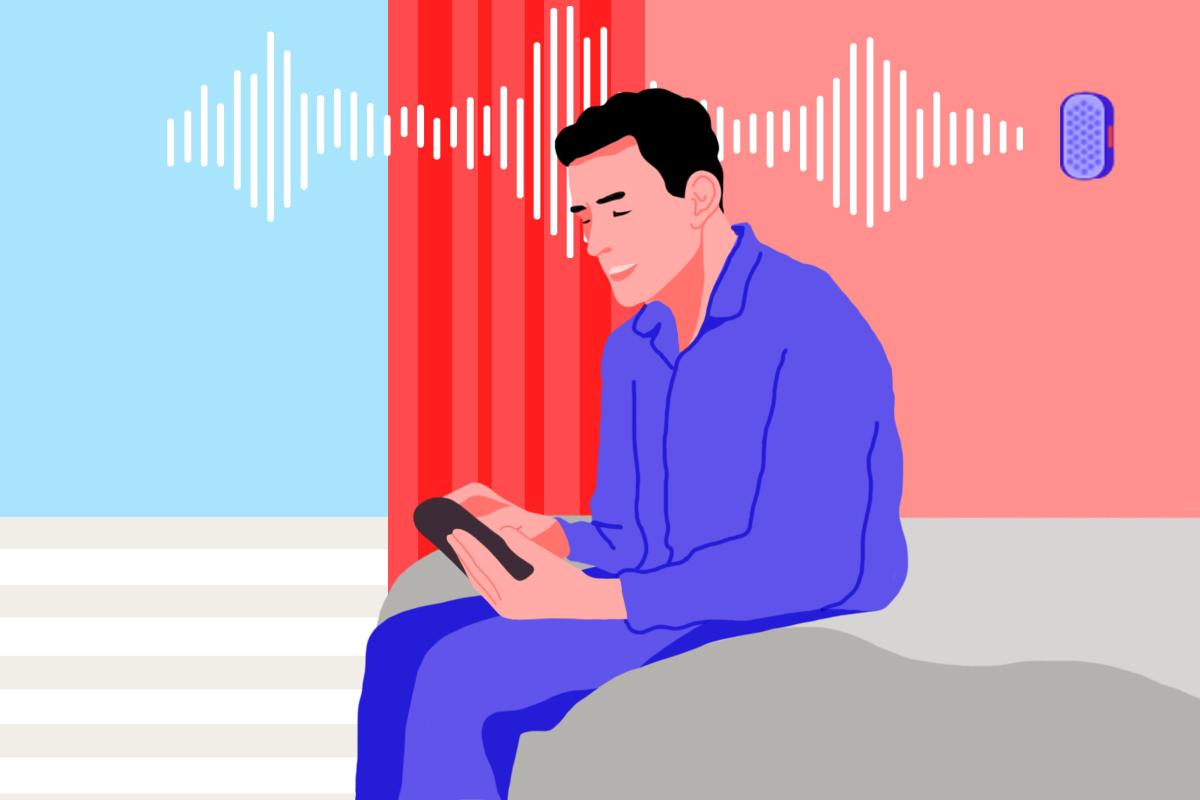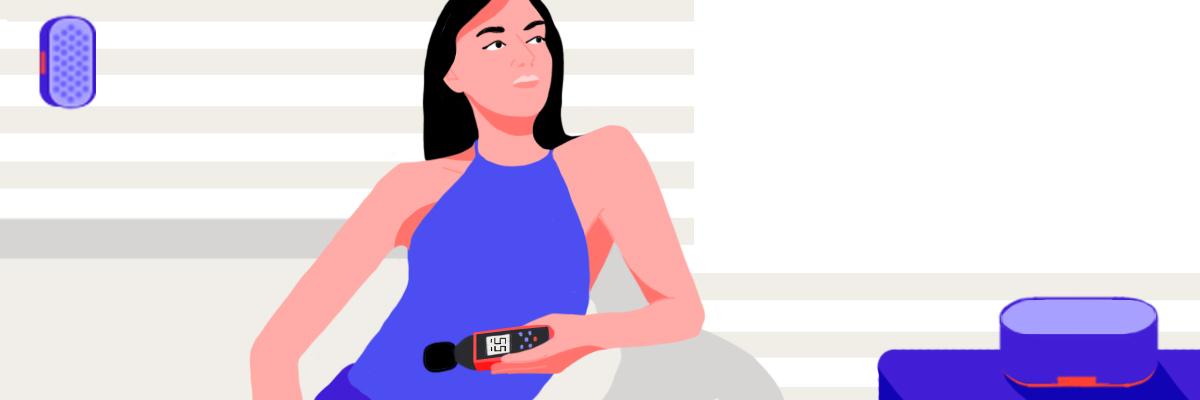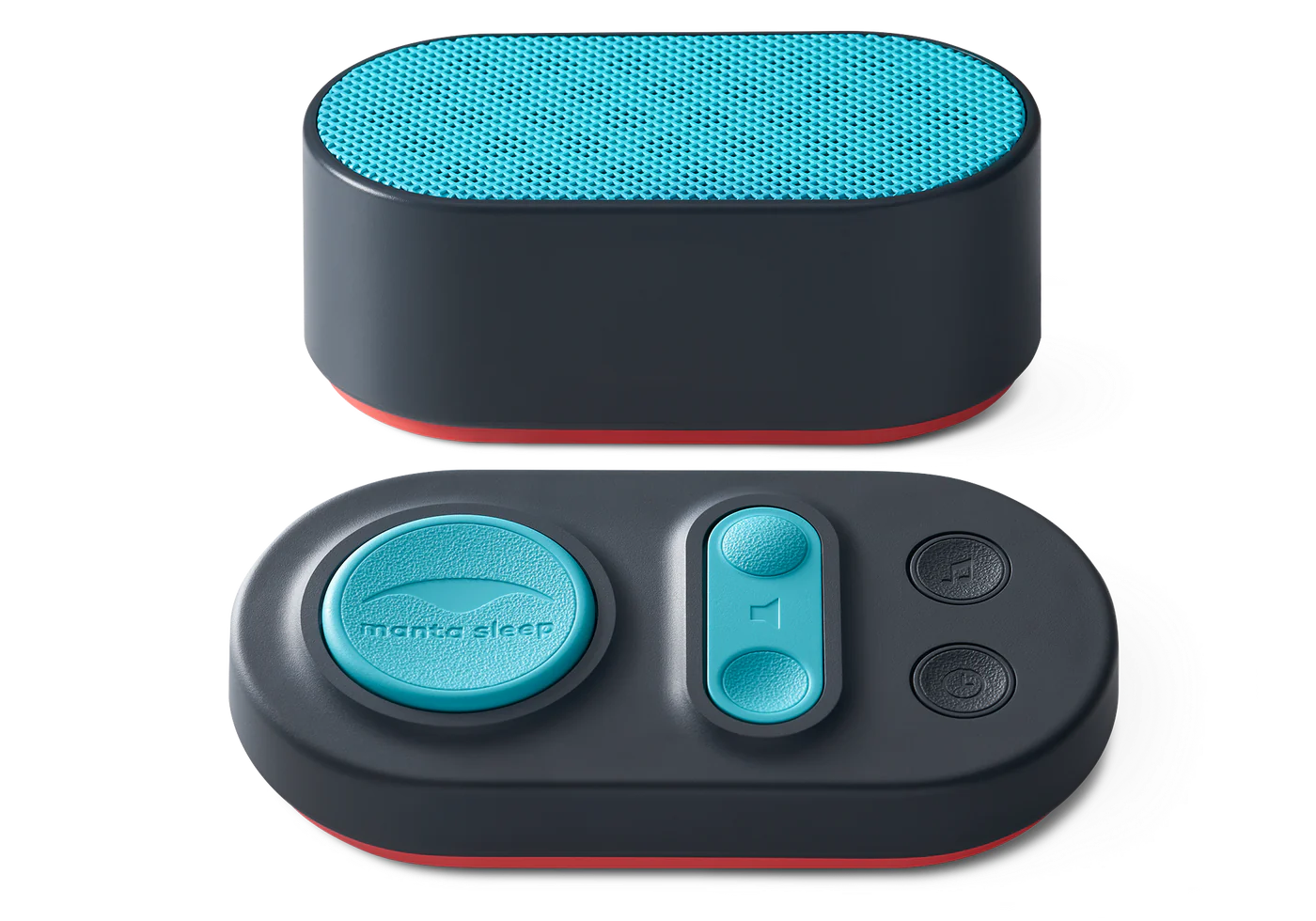How Loud Should White Noise Be for Adults: Finding the Right Volume

Can't get a decent night's sleep because your environment is too noisy?
There's a solution. White noise has become more popular in recent years as a sleep aid for grown-ups and babies, too. Whether you play it on an app or a white noise machine, you're likely wondering how loud white noise should be for adults. That's precisely what this article aims to explain.
Apart from discovering the optimal white noise volume, we'll discuss its benefits and how to find a noise level that's right for you.
Let's get started.
Key Takeaways
-
White noise is a combination of all audible frequencies. It has a consistent shushing sound that effectively masks disruptive environmental noise for better sleep quality and focus.
-
Safe white noise volume levels should measure between 50 and 70 decibels.
-
Choosing a sound level based on personal comfort and health conditions is essential to prevent risks linked to overly loud white noise.
Table of Contents
Understanding White Noise
What is white noise exactly?
It's a type of broadband sound that's consistent and unchanging, like TV and radio static or the whirring of a fan. It's known for its ability to drown out disruptive background noises that interfere with your zzzs, helping you fall asleep faster.
It’s effective for people living on a busy street or light sleepers dealing with noisy neighbors or snoring partners, which accounts for its growing popularity. In fact, a study published in the National Library of Medicine indicates that white noise helps improve sleep in areas with a significant amount of environmental noise.(1)
The Benefits of Using White Noise
Let’s briefly explore the benefits of white noise below:
-
It boosts focus by creating a stable auditory backdrop, which is great if you work or study in a busy environment.
-
You can get relief from insomnia, a sleep disorder that is often caused by stress and anxiety. A study published in Frontiers (conducted on healthy subjects) found that broadband noise can minimize insomnia symptoms.(2)
-
The unchanging and calming sound can reduce stress, helping you fall asleep faster at night.
-
It can also mask the loud ringing of tinnitus.
-
It can also offer you more privacy, making conversations less intelligible to others.
We’re sure you agree it’s worth giving white noise a shot to fall asleep faster at night or experience any of the other benefits mentioned above. However, keeping it at the proper decibel range is crucial for safety and health concerns.
What Are the Ideal White Noise Volume Levels for Adults?

Generally, 50 to 70 decibels is the recommended range for adults.
The Sleep Foundation says noise that measures over 70 decibels can be harmful with prolonged exposure(3). This range is loud enough to mask other sounds but isn't loud enough to be harmful.
An excessively high volume can make white noise counterproductive as a sleep or focus aid. High sound levels can cause auditory fatigue, where your brain and ears are tired from processing the sound. Instead of better sleep and focus, you'll likely feel overstimulated, sleepless, stressed and anxious.
Choosing how loud to play white noise depends mainly on your environment and what you feel comfortable with. Remember that white noise should play in the background and not dominate your auditory space.
White noise should mask intrusive noises, but you should be able to ignore it when not actively listening.
Another thing to consider is if you're listening to white noise for tinnitus or hyperacusis, a hearing disorder wherein normal noise sounds too loud. In these cases, determine the noise level with your healthcare provider first. Otherwise, white noise could worsen your symptoms.
How to Choose the Right Volume Setting
Selecting how loud an app or white noise machine should sound involves trial and error. What works for others might not work for you. However, stick to the recommended decibel range as you experiment.
Here are some tips for choosing your ideal white noise sound level:
-
You'll want to start at a low volume. You can slowly increase it until you find a level that drowns out background noise without intruding.
-
You'll also want to test which noise level works best by placing the machine in the area where you'll be using it, such as your room or office.
-
White noise sound levels depend on the time you are using it. For instance, disruptive environmental sounds are more common during the daytime. The louder the sudden noises, the higher you'll likely need to set your noise level. Again, play it within the recommended range.
-
After using it at various sound levels, pay attention to your response to white noise. It may be too loud if you wake up with a headache or groggy. Adjust accordingly.
-
You should also measure the sound level with a decibel meter. Some apps like NIOSH Sound Level Meter (iOS) and Decibel X (Android) can do this for you. However, results may differ depending on your device. An actual decibel meter instrument is the most reliable means of measurement.
Use these tips to find the noise level you prefer. Remember that you're looking for one that's enough to drown out other sounds without becoming a distraction.
Can White Noise Be Harmful to Adults?
Apart from improving sleep, white noise is beneficial in many ways. However, it does have its risks, especially with improper use.
Here are some ways that white noise can be harmful:
-
White noise may damage your hearing if you listen to it for extended periods at a high noise level. This is why playing it at the recommended decibel range is crucial to prevent hearing loss.
-
There's a potential risk of dependence wherein you rely on white noise to improve sleep at night. This makes it challenging to get good sleep in its absence. (Dependence is common in babies and toddlers, too.)
-
Sometimes white noise may mask essential sounds like alarms or safety alerts. Consider this when adding white noise to your sleep routine.
-
We mentioned this earlier, but white noise may cause anxiety and overstimulation. This is primarily a risk if you're sensitive to auditory stimuli.
Always use white noise at the recommended decibel range. Make sure to take breaks and listen to your body's cues, whether you're using it for sleep or focus.
White Noise vs. Other Colors of Sound
Besides white noise, other noise colors may help with sleep and focus. We'll discuss the most common ones here, but if you want to discover more, read our article on different color noises.
Let's start with pink noise (another type of broadband sound). It has a deeper and more resonant sound than white noise, where power decreases as frequency increases. Pink noise promotes relaxation and enhances sleep quality by calming the mind. Examples of pink noise include rustling leaves and steady rainfall.
Brown noise has a unique frequency profile where power diminishes rapidly as frequency increases, resulting in a deep, rumbling sound. Brown noise effectively drowns out low-frequency disturbances for better sleep. A waterfall or heavy rainfall are some examples.
On the other hand, red noise has a power spectrum that slowly declines as frequency rises. It's similar to brown noise but is often described as hiss-like. Studies indicate it can enhance sleep at night and focus by masking ambient sounds and creating a soothing atmosphere.
Why not try pink, red and brown noise? Experiment to see which works best for sleep and try others for work and study.
Also, while many excellent white noise apps exist, using a noise machine is more flexible and effective for volume control and sound options.
Meet Manta White Noise Machine
If you're considering a sound machine, why not try ours? We aren't kidding when we say it's the "world's most effective noise-blocking system."


This white noise machine creates an impenetrable sound barrier that blocks noise before it reaches you. Simply place the speaker near the source of the sounds that disrupt sleep or focus.
Manta White Noise Machine features:
-
Plays 15 soundscapes, like white, pink and brown noise and nature sounds to soothe you to sleep
-
Gapless and non-looping sounds
-
Powerful sound output with a rich and deep quality
-
Features a timer function with multiple options
-
Gradually lowers volume as the sleep timer reaches its end
-
Tactile control pad lets you adjust the settings from 32 feet away
-
Upgradeable to a dual-speaker system
-
100% LED-free with a durable design
Manta White Noise Machine can give your sleep quality and focus a serious upgrade. The machine's customizable settings and high-quality sound can help you safely drift off and stay asleep longer.
Conclusion: Finding the Right Volume for White Noise
We hope this article has shown you how loud white noise should be for adults. Remember to follow the tips outlined above to enjoy white noise's perks without risking your safety or health.
Leave a comment below if this helped you find your ideal sound level for white noise. We're curious to know how your experiments went, and we're sure other readers are too.
Safe listening and sweet dreams!
Sources:
(1) “The effects of white noise on sleep and duration in individuals living in a high noise environment in New York City.” National Library of Medicine, pubmed.ncbi.nlm.nih.gov/34049045/. Accessed 14 January 2025.
(2) “Broadband Sound Administration Improves Sleep Onset Latency in Healthy Subjects in a Model of Transient Insomnia.” Frontiers, www.frontiersin.org/journals/neurology/articles/10.3389/fneur.2017.00718/full. Accessed 14 January 2025.
(3) “White Noise.” Sleep Foundation, www.sleepfoundation.org/noise-and-sleep/white-noise. Accessed 14 January 2025.
Disclaimer: The information contained in this website or provided through our blog, e-mails, or programs is for informational purposes only. It is not intended to be a substitute for medical advice, diagnosis or treatment that can be provided by your healthcare professionals.












































